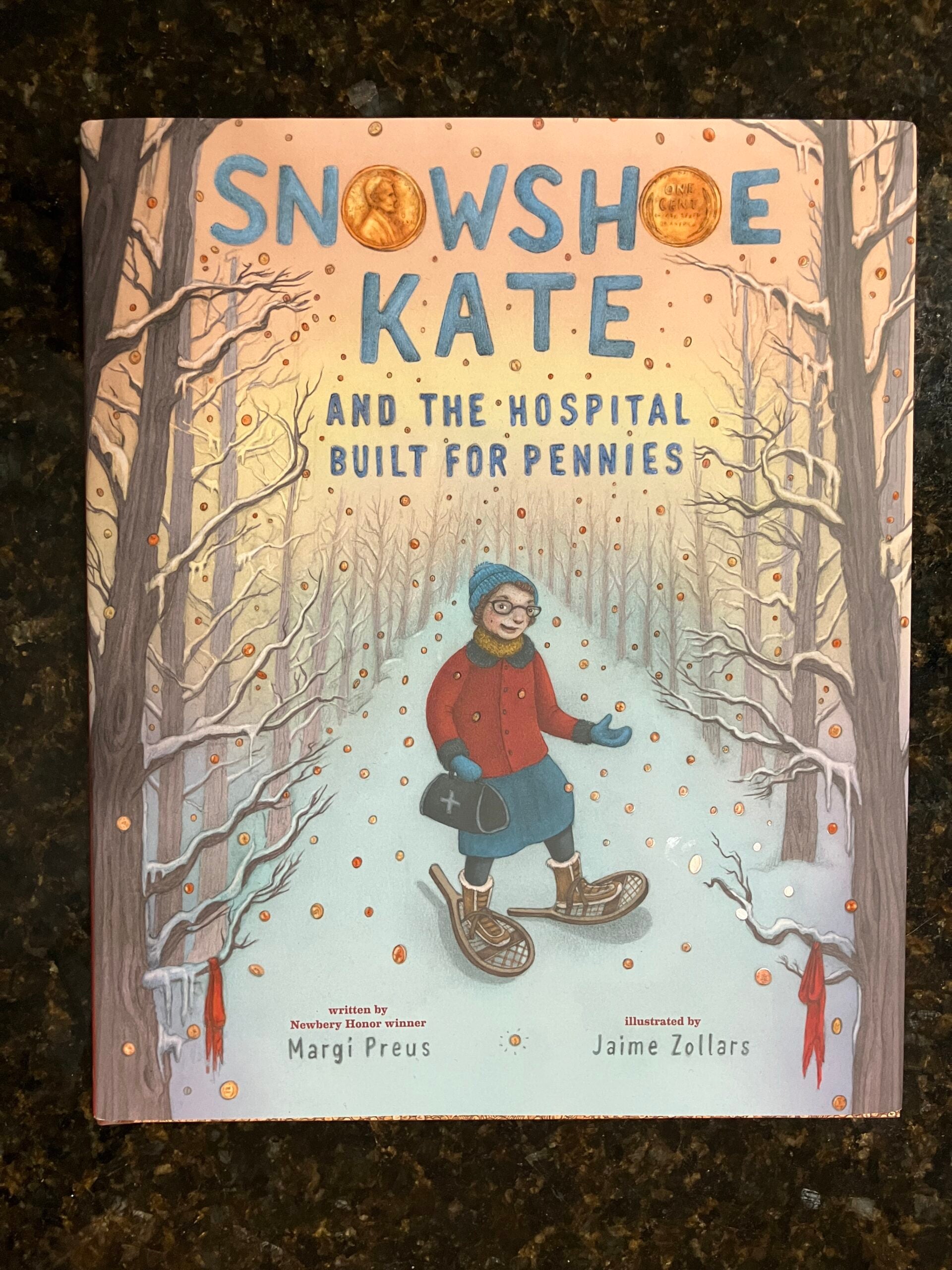The story of Dr. Kate Pelham Newcomb and her practice in the very rural Wisconsin Northwoods is well known around Woodruff — there’s even a museum dedicated to her.
It caught the attention of Margi Preus, a Newbery Honor winner who’s one of the most esteemed children’s books writers in the Twin Ports.
She frequently adapts true life stories, such as in “The Peace Bell,” celebrating friendship between the U.S. and Japan, and “Village of Scoundrels,” based on the true story of the French villagers who saved thousands of Jews during World War II.
News with a little more humanity
WPR’s “Wisconsin Today” newsletter keeps you connected to the state you love without feeling overwhelmed. No paywall. No agenda. No corporate filter.
“I am really drawn to stories about real people and people who acted with courage and integrity during difficult times,” she said. “I think they’re very interesting for children to be able to see what other young people have done.”
That included youngsters who were delivered as babies by the intrepid physician and who decided to pay it forward by raising pennies to build a hospital — and succeeded. Preus shared her telling of “Snowshoe Kate and the Hospital Built for Pennies” with WPR’s Robin Washington on “Morning Edition” ahead of the book’s Oct. 28 release.
 Photo courtesy of Abrams Books
Photo courtesy of Abrams Books
The following interview has been edited for clarity and brevity.
Robin Washington: Two of your books, “The Peace Bell” and “Heart of a Samurai,” are Japanese-related, and “Village of Scoundrels” is based in Europe. This one is set closer to home. How did you find out about Dr. Kate?
Margi Preus: I think I just bumped into it. There’s a very cute little video the Wisconsin Historical Society put out about her. That piqued my interest and made me want to find out more.
I found there are a couple of other books about her, one for younger readers and one for adults. And then I visited the museum. So I tried to learn as much as I could about her.
RW: She was born in 1885 and, after some trials and tribulations, finally became a physician. She practiced in Detroit, then moved to northern Wisconsin for its cleaner air to help her husband convalesce from illness. But she got back into being a doctor in response to a neighbor’s medical emergency.
MP: Yes. She did not think she was going to be a doctor again, partly because she had lost her first baby due to a doctor’s error. That made her kind of angry at doctors, including herself.
RW: You have a passage in the book that picks up the story from there.
MP: “When a snowbound neighbor was in danger of dying of pneumonia, Kate responded to the need like a retired fire horse when it hears the alarm. Bill, her husband, drove her as close to the neighbor’s house as he could, then she snowshoed the rest of the way. Once there, she rigged up a homemade vaporizer out of a kerosene lamp, a tomato can, and some wire. The device cleared the woman’s lungs and saved her life.
“Lucky for her — and lucky for us! Because after that, Kate decided to get her license to practice medicine in Wisconsin. And once she started, nothing could stop her. ‘Before the ink was dry on my license, my telephone began to ring at all hours of the day and night,’ Kate said. With Bill as her driver, she once traveled 376 miles, made 17 house calls, visited three different hospitals in three different cities, and delivered 7 babies, all in under 36 hours.”
 Photo courtesy of Abrams Books
Photo courtesy of Abrams Books
RW: And delivering all those babies inspired a children’s campaign to raise pennies to build a hospital.
MP: Yes. Kate delivered almost 4,000 babies, I think. The babies grew up to be high school kids and were in class one day when their teacher asked, “What would a million of something look like?” They thought of pennies, and decided, “Let’s collect a million pennies.” The teacher asked, “What would you do with these million pennies?” And the kids said, “We’d build a hospital for Dr. Kate.”
So they began to collect pennies and collected a million of them, which wasn’t quite enough to build a hospital. So one of her friends arranged for her to go on “This Is Your Life,” the television show that would surprise someone in the audience with people from their life. Dr. Kate thought she was just going to see a show, but she was the person they were celebrating that night. And after that, pennies flowed in from all over the world. They ended up with 11 million pennies — enough to build a hospital.
RW: It’s still there today as Lakeland Memorial Hospital in Woodruff, and the museum is nearby.
MP: It’s full of memorabilia and some of her equipment, just a lot of fun things to look at. And nearby is the world’s largest penny.
If you have an idea about something in northern Wisconsin you think we should talk about on Morning Edition, send it to us at northern@wpr.org.

